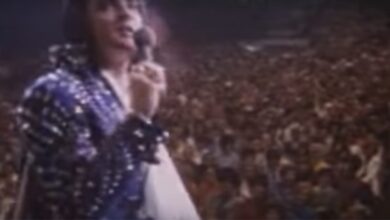Senior Music Enthusiasts Revitalized by Procol Harum’s Timeless Hits
Procol Harum, an iconic band renowned for their innovative approach to rock music, emerged from the creative visions of pianist and vocalist Gary Brooker and lyricist Keith Reid in 1967. With their roots deeply embedded in the lush textures of baroque pop and the experimental spirit of progressive rock, Procol Harum quickly distinguished themselves from their contemporaries. The band’s music is characterized by its intricate arrangements, sophisticated melodies, and profound lyrics, which often explore themes of love, loss, and existential reflection. Gary Brooker’s passionate and soulful vocal style, combined with his prowess on the piano, laid the foundation for the band’s unique sound, while Reid’s evocative and sometimes cryptic verses added a layer of depth and intrigue.
Their inaugural single, “A Whiter Shade of Pale,” was released in the same year the band formed and became an immediate sensation. The song’s haunting melody, featuring the distinctive organ riff played by Matthew Fisher, captivated listeners and led to its chart-topping success across multiple countries. The lyrics, rich with metaphor and open to interpretation, resonated with the burgeoning counterculture of the late 1960s, establishing Procol Harum as a pioneering force in the rock genre. The ethereal quality of the song, combined with its lyrical ambiguity, invited listeners into a world where music transcended mere entertainment, encouraging introspection and emotional connection.
Gary Brooker’s musical journey did not begin with Procol Harum; he had been involved in various musical projects before the band’s formation. Born in London in 1945, Brooker was influenced by a range of genres including jazz, blues, and early rock and roll. This diverse musical background contributed significantly to the eclectic sound that would define Procol Harum. The bond between Brooker and Reid was particularly pivotal, as Reid’s poetry often mirrored Brooker’s own experiences and thoughts, creating a cohesive artistic identity that would evolve over the years.
As the band continued to gain popularity, their lineup underwent several changes, yet Brooker remained a steadfast leader and creative force. His deep commitment to musical exploration allowed Procol Harum to evolve alongside the changing musical landscape of the 1970s and beyond. The band experimented with various styles and arrangements, always pushing the boundaries of what rock music could encompass. Their later works often incorporated elements of classical music, jazz, and even theatrical influences, demonstrating an unwavering determination to innovate within their art.
A significant highlight in Procol Harum’s trajectory came in 2006, during a historic collaboration with the Danish National Concert Orchestra and Choir at Ledreborg Castle. This concert was a watershed moment that reimagined their classic repertoire through orchestral arrangements. The decision to include orchestral elements in their performance underscored Brooker’s vision of expanding the band’s sonic horizon while drawing on their rich musical legacy. The picturesque setting of Ledreborg Castle, recognized for its remarkable acoustics, provided an ideal venue that enhanced the concert’s overall impact, turning familiar songs into grand musical experiences.
During the Ledreborg Castle concert, “A Whiter Shade of Pale” was performed with a sweeping orchestral backdrop, elevating its emotional resonance and adding layers of complexity to the already rich composition. Critics hailed this event as a successful fusion of rock and classical music, showcasing Brooker’s extraordinary talent for crafting moving performances that bridge diverse musical worlds. The result was a reinterpretation that retained the song’s original magic while introducing it to new audiences, proving the enduring appeal of Procol Harum’s artistry.
The live album released in 2009 from this landmark performance serves as a testament to the band’s ongoing relevance and appeal. It captured not only their musical versatility but also the sublime collaboration with orchestral musicians that enriched their sound. The album offered listeners a chance to relive the grandeur of that evening, illustrating how Procol Harum continues to resonate with both long-time fans and new listeners, who are discovering the band’s legacy anew.
Gary Brooker’s evolution as an artist throughout his tenure with Procol Harum can be seen as a reflection of both personal and musical growth. His willingness to embrace new styles and collaborate with various orchestras and ensembles demonstrates a fearless approach to creativity. Through this journey, Brooker has solidified his status as a luminary in the rock genre, influencing countless musicians and leaving an indelible mark on the music landscape.
Procol Harum’s dedication to pushing artistic boundaries is evident not only in their studio recordings but also in their live performances. Their concerts often evoke a sense of nostalgia while still feeling fresh and innovative, showcasing how their music can bridge generations of fans. As they continue to perform and record, their commitment to artistic integrity and musical excellence remains unwavering.
In sum, Procol Harum’s contribution to the tapestry of rock music is both profound and lasting. Their ability to blend rock with orchestral influences, as exemplified by their performance with the Danish National Concert Orchestra, speaks to a larger artistic vision that challenges conventions and redefines genres. Gary Brooker’s role as a leading figure within the band emphasizes the importance of not just musical talent, but also the passion and vision that drive artists to resonate deeply with their audiences. As their music continues to inspire and influence, Procol Harum remains a significant part of the narrative of rock history, with a legacy that will likely continue to flourish for years to come.





